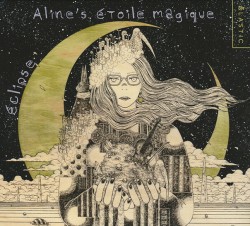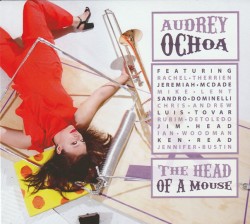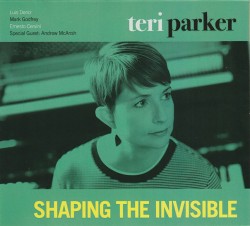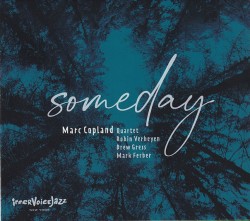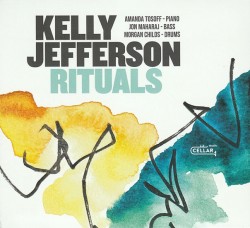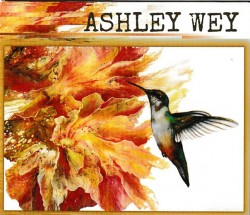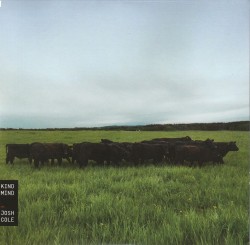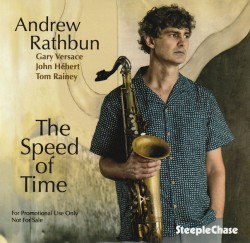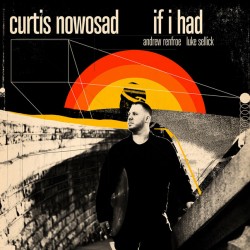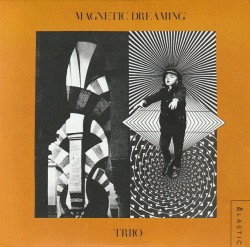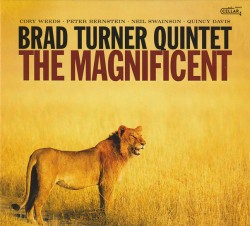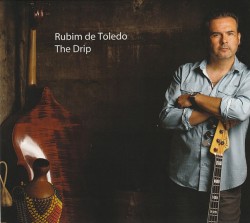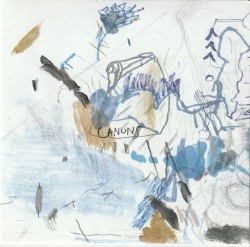Plays Long
Longhand
Drip Audio DA 02040 (dripaudio.com)
Josh Zubot Strings
Josh Zubot; Jesse Zubot; James Meger; Meredith Bates; Peggy Lee
Drip Audio DA02420 (dripaudio.com)
Emad Armoush’s Duos
Emad Armoush; Francois Houle; Jesse Zubot; JP Carter; Kenton Loewen; Marina Hasselberg
Drip Audio DA02392 (dripaudio.com)
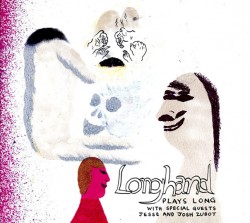 Dividing his time among record production, film scoring and running the Drip Audio record label, British Columbia-based violinist Jesse Zubot finds time to play music. Fittingly for someone whose productions include pop and ethnic sounds, each of these sessions features different styles. On Longhand’s Play Long, he joins guitarist Tony Wilson’s jazz-rock fusion band featuring Russell Sholberg, playing bass and musical saw, percussionist Skye Brooks and Jesse’s brother Josh Zubot on violin. When the brothers become twin Jean-Luc Pontys, expositions are torqued to arena-rock distortion, especially when Wilson’s effects pedals produce stomps and buzzing tones. A bass groove and drum backbeat contribute as well. However when the violinists match Wilson’s kalimba colouration with gentleness and folksy bounces as on The Exotic Popsicle narratives are lightened. Chicken Grease is the most notable instance of moderated fusion. Here a moderated bass solo gives way to multiple-string shudders from the violinists and chiming chords from Wilson, leading to a theme with a pop music interface, but recapped enough to emphasize jazz tradition links.
Dividing his time among record production, film scoring and running the Drip Audio record label, British Columbia-based violinist Jesse Zubot finds time to play music. Fittingly for someone whose productions include pop and ethnic sounds, each of these sessions features different styles. On Longhand’s Play Long, he joins guitarist Tony Wilson’s jazz-rock fusion band featuring Russell Sholberg, playing bass and musical saw, percussionist Skye Brooks and Jesse’s brother Josh Zubot on violin. When the brothers become twin Jean-Luc Pontys, expositions are torqued to arena-rock distortion, especially when Wilson’s effects pedals produce stomps and buzzing tones. A bass groove and drum backbeat contribute as well. However when the violinists match Wilson’s kalimba colouration with gentleness and folksy bounces as on The Exotic Popsicle narratives are lightened. Chicken Grease is the most notable instance of moderated fusion. Here a moderated bass solo gives way to multiple-string shudders from the violinists and chiming chords from Wilson, leading to a theme with a pop music interface, but recapped enough to emphasize jazz tradition links.
 Josh Zubot, playing viola and violin, is the leader on Strings. Interpreting his jazz-improv compositions are cellist Peggy Lee; bassist James Meger; Meredith Bates playing violin/viola and brother Jesse on violian. Uniquely constituting this string quintet, Zubot’s arrangements include a few traditional sounding and mostly pastoral tutti themes and those ricocheting between Arcadian and avant-garde passages which divide the strings into soloists with sympathetic backing. Beach and Car is notable since it’s a suite of three separate sections in fewer than six and a half minutes. Beginning with pleasant swing it moves up the scale as a violinist’s broken-chord stops are backed by double bass thumps. Slowing to mid-range, the piece climaxes with a contrapuntal do-si-do involving the lower-pitched strings’ watery textures and the higher pitched ones’ aviary squeaks before a full band ending. Multiple tracks vibrate in tempos ranging from andante to prestissimo, with the two Explorations the freest ones, highlighting harsh bow strokes and col legno string scratches. Other tunes invoke flat line minimalism, some almost romantic formalism, while others feature the closest to a martial beat string plyers can attain. With three violinists, it’s only on Augur 44 when the others play violas, that Jesse Zubot’s contributions stand out. Turning spiccato squeaks every which way after introducing a hoedown-like theme, the other musicians then add Eastern European-like presto slides. Tension from Zubot’s string jumping doesn’t upset the narrative’s unfolding, since pressure is released first by a mellow tutti interlude and later by slapped and sliding asides from the bassist and cellist.
Josh Zubot, playing viola and violin, is the leader on Strings. Interpreting his jazz-improv compositions are cellist Peggy Lee; bassist James Meger; Meredith Bates playing violin/viola and brother Jesse on violian. Uniquely constituting this string quintet, Zubot’s arrangements include a few traditional sounding and mostly pastoral tutti themes and those ricocheting between Arcadian and avant-garde passages which divide the strings into soloists with sympathetic backing. Beach and Car is notable since it’s a suite of three separate sections in fewer than six and a half minutes. Beginning with pleasant swing it moves up the scale as a violinist’s broken-chord stops are backed by double bass thumps. Slowing to mid-range, the piece climaxes with a contrapuntal do-si-do involving the lower-pitched strings’ watery textures and the higher pitched ones’ aviary squeaks before a full band ending. Multiple tracks vibrate in tempos ranging from andante to prestissimo, with the two Explorations the freest ones, highlighting harsh bow strokes and col legno string scratches. Other tunes invoke flat line minimalism, some almost romantic formalism, while others feature the closest to a martial beat string plyers can attain. With three violinists, it’s only on Augur 44 when the others play violas, that Jesse Zubot’s contributions stand out. Turning spiccato squeaks every which way after introducing a hoedown-like theme, the other musicians then add Eastern European-like presto slides. Tension from Zubot’s string jumping doesn’t upset the narrative’s unfolding, since pressure is released first by a mellow tutti interlude and later by slapped and sliding asides from the bassist and cellist.
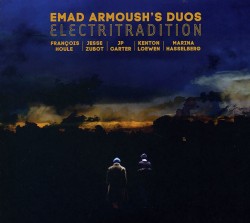 Jesse Zubot is one of the Vancouver players duetting with Syrian-born local Emad Armoush, who plays oud, ney, guitar and vocalizes on Electritradition. Some tracks are a little too close to ethnic music, but when Armoush partners with experienced improvisers the result is a dramatic blend of West Coast and Middle East. Zubot’s spiccato slides and buzzes seem more accompaniment than point making when he plays. More notable are duets with Kenton Loewen which refine Levantine lyrics and drum beats. Loewen’s rough accents on Talah create tandem progression with Armoush’s guitar twangs; and this toughness is intensified on Hey Free Bop as clashing ruffs make ney peeps almost swing. Clenched guitar picking on Flamenco Strut emphasizes the title’s second word as trumpeter JP Carter’s strained triplets create a Middle-Eastern blues. Equivalent brass shakes and toneless breaths on Labshi mean that Armoush’s percussive picking combines the free improv as well as the traditional music world.
Jesse Zubot is one of the Vancouver players duetting with Syrian-born local Emad Armoush, who plays oud, ney, guitar and vocalizes on Electritradition. Some tracks are a little too close to ethnic music, but when Armoush partners with experienced improvisers the result is a dramatic blend of West Coast and Middle East. Zubot’s spiccato slides and buzzes seem more accompaniment than point making when he plays. More notable are duets with Kenton Loewen which refine Levantine lyrics and drum beats. Loewen’s rough accents on Talah create tandem progression with Armoush’s guitar twangs; and this toughness is intensified on Hey Free Bop as clashing ruffs make ney peeps almost swing. Clenched guitar picking on Flamenco Strut emphasizes the title’s second word as trumpeter JP Carter’s strained triplets create a Middle-Eastern blues. Equivalent brass shakes and toneless breaths on Labshi mean that Armoush’s percussive picking combines the free improv as well as the traditional music world.
String oriented, but not string exclusive, these discs confirm that unprecedented sounds are being created and recorded in British Columbia.
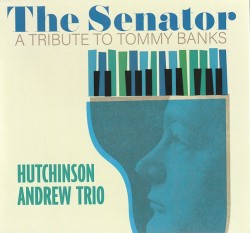 The Senator – A Tribute to Tommy Banks
The Senator – A Tribute to Tommy Banks

